Vim, or ‘Vi Improved,’ is a highly configurable text editor often referred to as a programmer’s editor. It offers features, especially for programmers, that it is sometimes considered an IDE.
Vim editors are quick and easy to use, allowing users to make changes to files with a few keystrokes. The Vim editor comes pre-installed in almost all Linux distros.
Vim is regarded as one of the best text editors for security professionals and Linux users. Its huge and active user base continually releases new modules, add-ons, and text editor improvements.
Despite the fact that Vim is constantly being improved to become an effective text editor, some individuals have developed a variety of Vim-inspired editors with more efficient and functional capabilities like asynchronous execution, advanced file search, AI support, etc. There are plenty of Vim-inspired (or fork of Vim) editors available on the internet.
Geekflare has tested and listed some excellent Vim-inspired editors that can help you to be more productive.
You can trust Geekflare
At Geekflare, trust and transparency are paramount. Our team of experts, with over 185 years of combined experience in business and technology, tests and reviews software, ensuring our ratings and awards are unbiased and reliable. Learn how we test.
NeoVim
NeoVim or nvim is a highly extensible and modern replacement for Vim. It is a fork of open-source Vim and is fully compatible with Vim and Vimscript features.
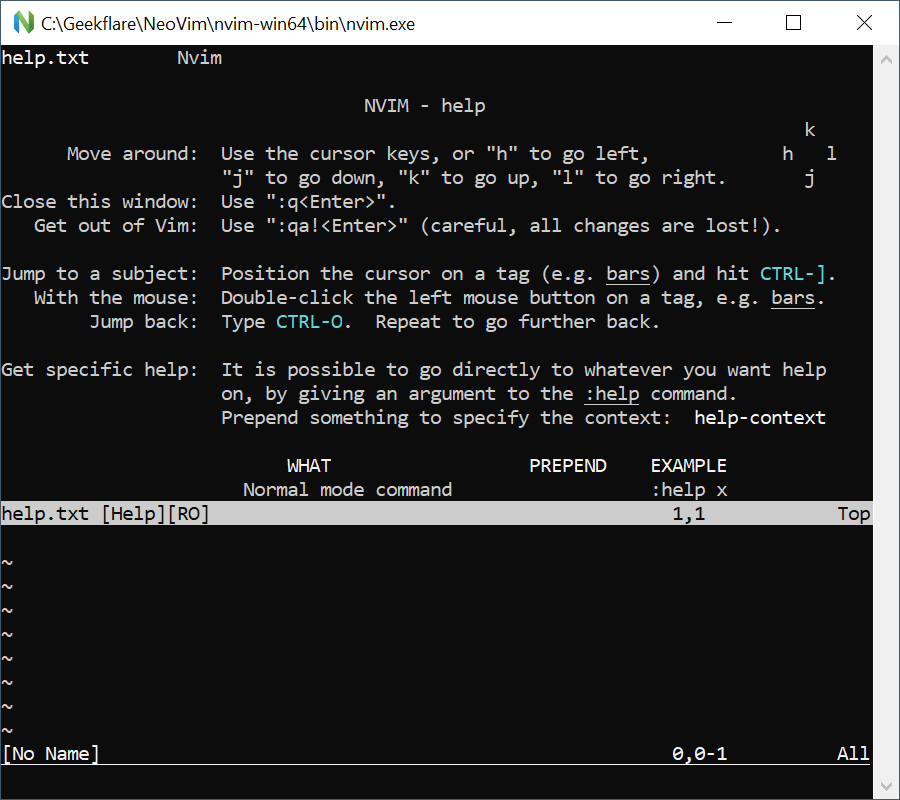
nvim exposes a powerful API that plugins and external processes can use via RPC, Lua, and Vimscript. It is also embeddable within other GUIs, IDEs, and web browsers as an editor or script host.
NeoVim Features
- Fully compatible with Vim and Vimscript
- Supports extensive APIs that are discoverable, versioned and documented
- Extensible with plugins
- New plugins can be easily created with Lua
- Supports modern terminal features
- Built-in LSP client for semantic code inspection and refactoring
NeoVim is supported on Mac, Linux and Windows and is downloadable from its GitHub Releases page.
Kakoune
Kakoune is a fast, customizable, open-source modal editor like Vim. It works on the command line but has an extensive set of features that we list next, which enhance its productivity, especially for coding.
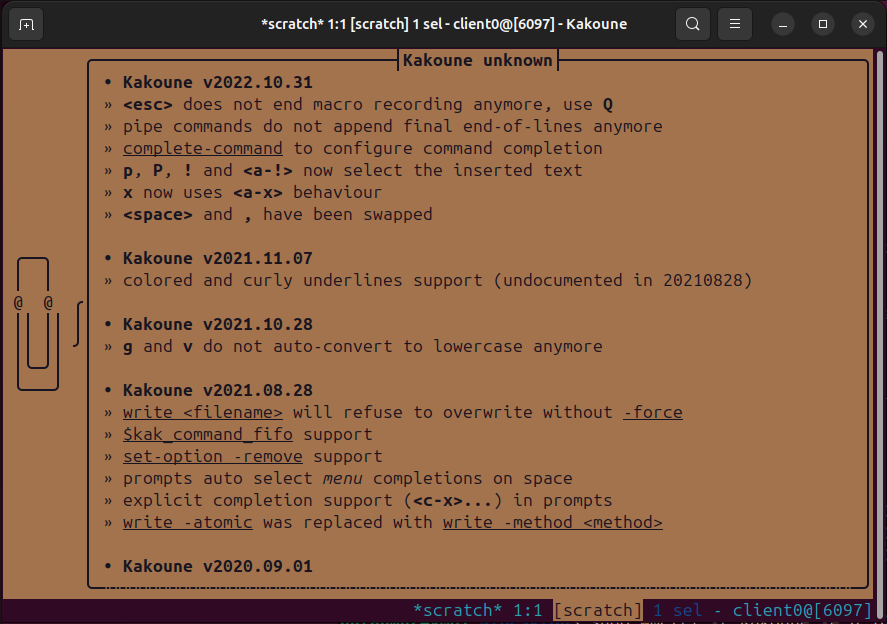
Kakoune Features
- Powerful selection manipulation primitives with regex support
- Powerful text manipulation primitives
- Client-server architecture that supports multiple clients in the same session
- Auto-completion and Automatic contextual help
- Supports Macros and Hooks
- Syntax highlighting while supporting multiple languages in the same buffer
Kakoune runs on Mac and Linux. It can also work on Windows with Cygwin’s support. Most Linux package repositories have Kakoune available and can be installed directly.
Helix
Helix is a modern CLI editor with powerful code editing and manipulation capabilities. Many of the features that other editors do not provide or provide as extensions/plugins are available as built-in utilities in Helix.
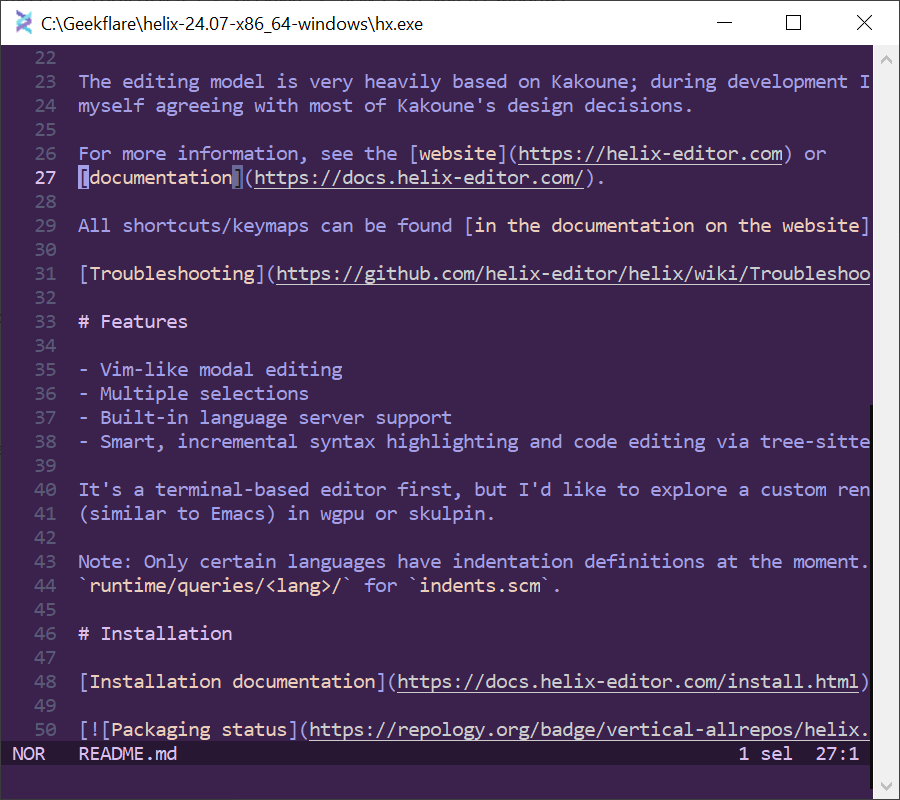
Helix Features
- Vim-like modal editing
- Supports multiple selections to allow concurrent editing
- Integrates tree-sitter for error-tolerant and robust syntax trees
- Powerful code manipulation capabilities that allow navigating functions, classes, etc.
- Modern built-in features like fuzzy finder, project-wide search, themes, etc.
- Built-in language server support
Helix supports Linux, Mac, and Windows platforms; pre-built binaries are available for all of them. These can be downloaded from its GitHub Releases page.
Amp
Amp is a no-plugin, zero-configuration, open-source CLI text editor which includes all the essentials by default. Inspired by Vim, it features modal editing while still being lightweight.

It is designed primarily for developers but also works well as a general text editor in CLI environments.
Amp Features
- Multiple selections as a central way of interacting
- Fuzzy file finder using a simple, accurate matching algorithm
- Fast, precise cursor movement with simple expressions
- Simple YAML-based key mappings
- Ability to compose multiple built-in commands into new, custom macros
Amp is only available for Mac and Linux platforms, which can be obtained from its official Git Releases page.
Vis
Vis is a modern editor that combines features of Vim and Sam to aim to be legacy-free, simple, and efficient.
It extends Vi’s modal editing with built-in support for multiple cursors/selections and combines it with Sam’s structural, regular expression-based command language.
Vis Features
- Unicode support
- Supports large files, including binaries
- Efficient syntax highlighting
- Can run in resource-constrained environments
- Strives to be simple yet efficient
Vis is available as source code from its GitHub Releases page. It needs to be manually built according to the instructions on its readme page.
Vile
Vile or ‘VI Like Emacs’ is a CLI text editor that supports many Vi features while adding features of Emacs.

It is not a complete clone of Vi, so common day-to-day vi keystrokes for editing files may work with Vile, while those not so common may not. Refer to its documentation for its usage.
Vile Features
- Supports multiple buffers and multiple window
- Supports modal editing of
Vi(to an extent) - Syntax highlighting
- Custom filters
- Supports programmed procedures or Macros
Vile is available for Linux, Mac and Windows as pre-built binaries and packages including installers for Windows. Its source code can also be used to manually build from code.
Warp
Warp is an advanced terminal with a modern UI and built-in AI support. It supports IDE-like editing, block input/output for easier navigation, and command completion and correction for hundreds of common commands.
Though the basic version of Warp is free to download and use, paid editions are available for advanced use cases with additional features and support.
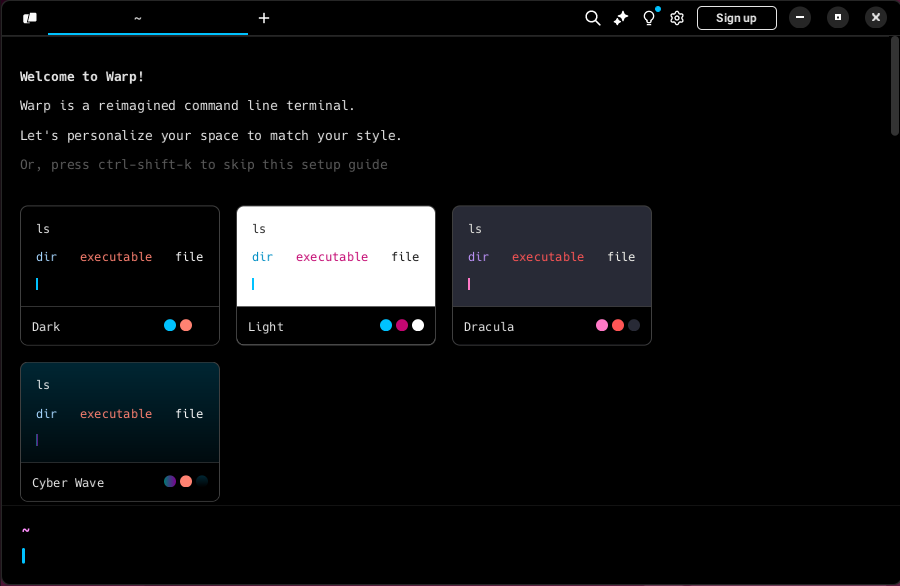
Warp Features
- Customizable appearance and theme support
- Support Vim key bindings
- AI-supported command completions and corrections
- Chat-based Warp AI support with complex workflows
- Warp Drive support to save your workflows and notebooks in the cloud
- In-built team collaboration tools like team drive and session sharing
- Allows integration with SSO/SAML for authentication
As of publishing this article, Warp is available for Linux and Mac platforms, though a Windows version is soon expected to be released.
Vim
Vim is a very stable, open-source and highly configurable text editor which is included as “vi” with most UNIX / Linux systems and with Apple OS X. The features of vi that it enhances is what is being used as base for other Vim based tools.
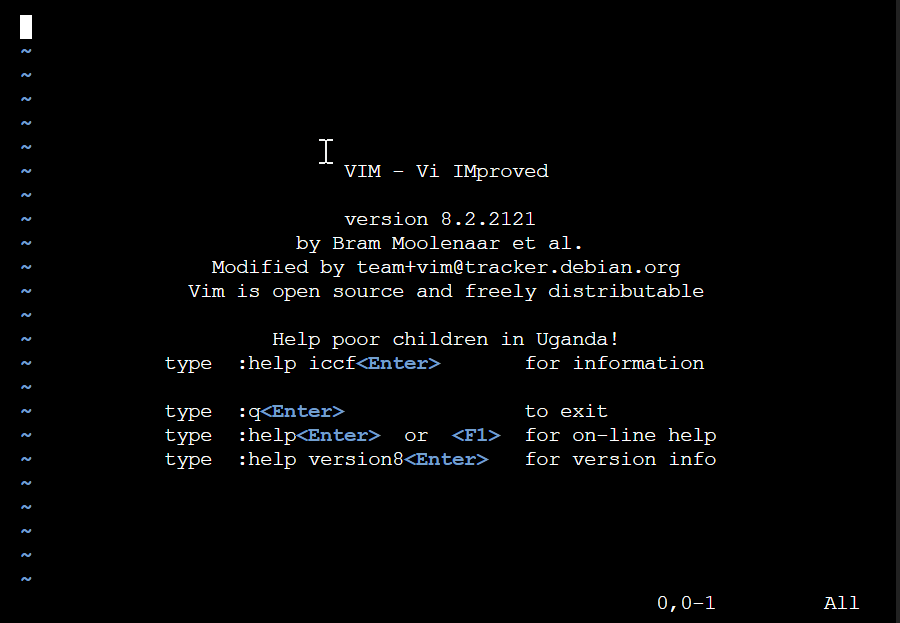
Vim is often one of the basic utilities needed on a minimal OS install, whether you’re working as a System Administrator or a Programmer. It just needs a CLI environment with minimal dependencies. Also, it has a helpful and large community for support.
Vim Features
- Extremely customizable and supports a lot of keyboard shortcuts
- Vim tool is very lightweight and fast
- Built-in package manager and text manipulation primitives.
- Supports split screen and tabs for productivity
- Can record ‘macros’ for repeated tasks
If you’re on Linux, you most likely have Vim installed and ready for use. It can also be installed on Windows, Mac, and other UNIX-based platforms.
Lapce
Lapce is an open-source, modern code editor written in Rust. It offers its users a fast editing/coding environment and some nice features.

Its features are more suited to an audience that works on coding and related tasks, though one can use it for normal editing tasks as well.
Lapce Features
- It is fast supporting GPU acceleration in Rust
- Supports code highlighting, completion, diagnostics and action
- Allows remote development
- Built-in support for a Vim
- Customizable with plugin support
- Built-in terminal window for enhanced productivity
Lapce is cross-platform and is available for Windows, Linux and Mac.
Spacemacs
Spacemacs is an Emacs-based, open-source text editor with an active and helpful community. It is designed on four core pillars: Mnemonic, Discoverable, Consistent and “Crowd-Configured”.
It was initially intended for the Vim audience who want to use Emacs features, but it is also perfectly usable by non-Vim users with an Emacs editing style.
Spacemacs Features
- Modal editing support on the Emacs platform
- Fast launch time with lazy loading of packages and configurations
- Supports dynamic switching of editing style between emacs and vim
- Minimalistic and nice graphical UI
- Active and helpful community
Spacemacs is an extension for Emacs, so Emacs needs to be installed before you can use Spacemacs. The system should also have a package manager and git and tar utilities.
Final Words
The above-listed text editors are inspired by “vi” and have a range of powerful features and extensions that can help you be more productive in your day-to-day tasks, such as coding, system administration, or normal text editing.
This guide will help you choose the one that best suits your requirements. For more information about the respective editors, refer to the documentation section on their home pages.

